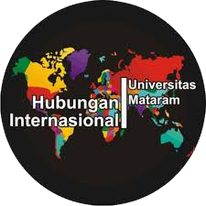CHINA’S HIGH SPEED RAILWAY AND THE STRATEGIC INTEREST IN SOUTHEAST ASIA
DOI:
https://doi.org/10.29303/ijpss.v3i1.78Keywords:
high speed railway, OBOR, trade, growth, soft powerAbstract
The objective of this research is to elaborate the strategic advance that will be gained by China both in economic and political sectors. China’s transforming as a new global power, entered in five main destinations for foreign investment, become the consumer of 20%-25% of the world’s iron, steel, aluminum and third consumer of world oil production. China's ability in operating high technology attracts the world to admit China’s role in world politics. High-speed railway (HSR) technology started to investigate in 2004 and entered the production process in 2008; HSR becomes strategic tool for China when it promotes to Southeast Asia. By initiating HSR, China will be able to control the mobility of China's products in the region; the catalyst of the China’s southwestern growth; improving trade and the industrial sector. Supporting one belt one road policy and transforming the bad image of China will be the strategic way in the political sector.
The elaboration of the soft power concept by Joseph Nye, Joshua Kurlantzick, and the Chinese conception is the guideline in this study. Qualitative analysis in library research is the main method. Data is taken from books, journals, reports, and websites.
References
China’s Railways. (2012). The Economist. http://www.economist.com/blogs/analects/%0A2012/08/chinas-railways%0A
China invests in south-east Asia for trade, food, energy and resources. (2012). The Guardian.Com. http://www.theguardian.com/world/2012/mar/22/china-south-east-asia-influence
Christopher Franks. (n.d.). Surviving the Trans-Siberian Railway. GoAbrod.Com. Retrieved February 2, 2020, from https://www.goabroad.com/articles/study-abroad/surviving-the-trans-siberian-railway
Development of High Speed Railway in China. (2016). ABC.Net.Au. http://www.abc.net.au/news/2016-07-19/malaysia-singapore-team-up-on-bullet-train-project/7642636
Ford, P. (2015). China’s high speed rail: All dressed up with no place to sell? The Cristian Science Monitor. https://www.csmonitor.com/World/Asia-Pacific/2015/0217/China-s-high-speed-rail-All-dressed-up-with-no-place-to-sell
H.V. Vinayak, F. T. & O. T. (2014). Understanding ASEAN: Seven things you need to know. Mckinsey.Com. http://www.mckinsey.com/insights/public_sector/understanding_asean_seven%0A_things_you_need_to_know %0A
Infrastructure for a Seamless Asia. (2009). Asian Development Bank and Asian Development Bank Institute.
Jacob Stokes. (2015). China’s Road Rules Beijing Looks West Toward Eurasian Integration. Foreign Affairs.Com. https://www.foreignaffairs.com/articles/asia/2015-04-19/chinas-road-rules
Jiang Xu & Yanyan Chen. (2014). Planning Intercity Railway in China’s Megar-City Region: Insights From The Pearl River Delta. China Review, 14(01), 18–19.
Joshua Kurlantzick. (2007). Charm Offensive: How China’s Soft Power is Transforming the World. Yale University Press.
Kennedy, D. A. P. & S. (2015). Building China’s “One Belt, One Road. Csis.Org. http://csis.org/publication/building-chinas-one-belt-one-road
Li, M. (2009). Soft Power: China’s Emerging Strategy in International Politics (Mingjiang Li (Ed.)). Lexington Books.
Nye., J. S. (2004). Soft power: The mean to success in world politics. Public Affair.
Nye, J. S. (2004). Soft power: The mean to success in world politics. Public Affair.
P.C. Saunders. (2008). China’s Role in Asia (D. Shambaugh & M. Yahuda (Ed.)). Rowman & Littlefield.
Panos Mourdoukoutas. (2013). World’s 500 Largest Corporations In 2013: The Chinese Are Rising. Forbes.Com. https://www.forbes.com/sites/panosmourdoukoutas/2013/07/17/worlds-500-largest-corporations-in-2013-the-chinese-are-rising/?sh=4e81677a41e2
R Lotta. (2009). China‟s Rise in the Wolrd Economy. Economic and Political Weekly, 44(8), 30.
Railway in China. (1908). Journal of the Royal Society of Arts, 59, 993–995.
Shaohui, T. (2015). Chronology of China’s Belt and Road Initiative. Xinhuanet.Com. http://news.xinhuanet.com/english/2015-03/28/c_134105435.htm
T Katagi. (2011). Development of High Speed Railway in China. Japan Railway & Transport Review, 57, 36–41.
Wade, G. (2013). Changing Asia: China’s High-speed Railway Diplomacy. The Strategist.Com. https://www.aspistrategist.org.au/changing-asia-chinas-high-speed-railway-diplomacy/
Wall, J. S. & M. (2015). Are superfast trains speeding down the tracks? BBC.Com. https://www.bbc.com/news/business-31608679
William T. Wilson. (2014). Beating The Middle-Income Trap in Southeast Asia. Heritage.Org. http://www.heritage.org/research/reports/2014/08/beating-the-middle-income-trap-in-southeast-asia
Yuliantoro, N. R. (2012). Menuju Kekuatan Utama Dunia. Institute of International Studies.














